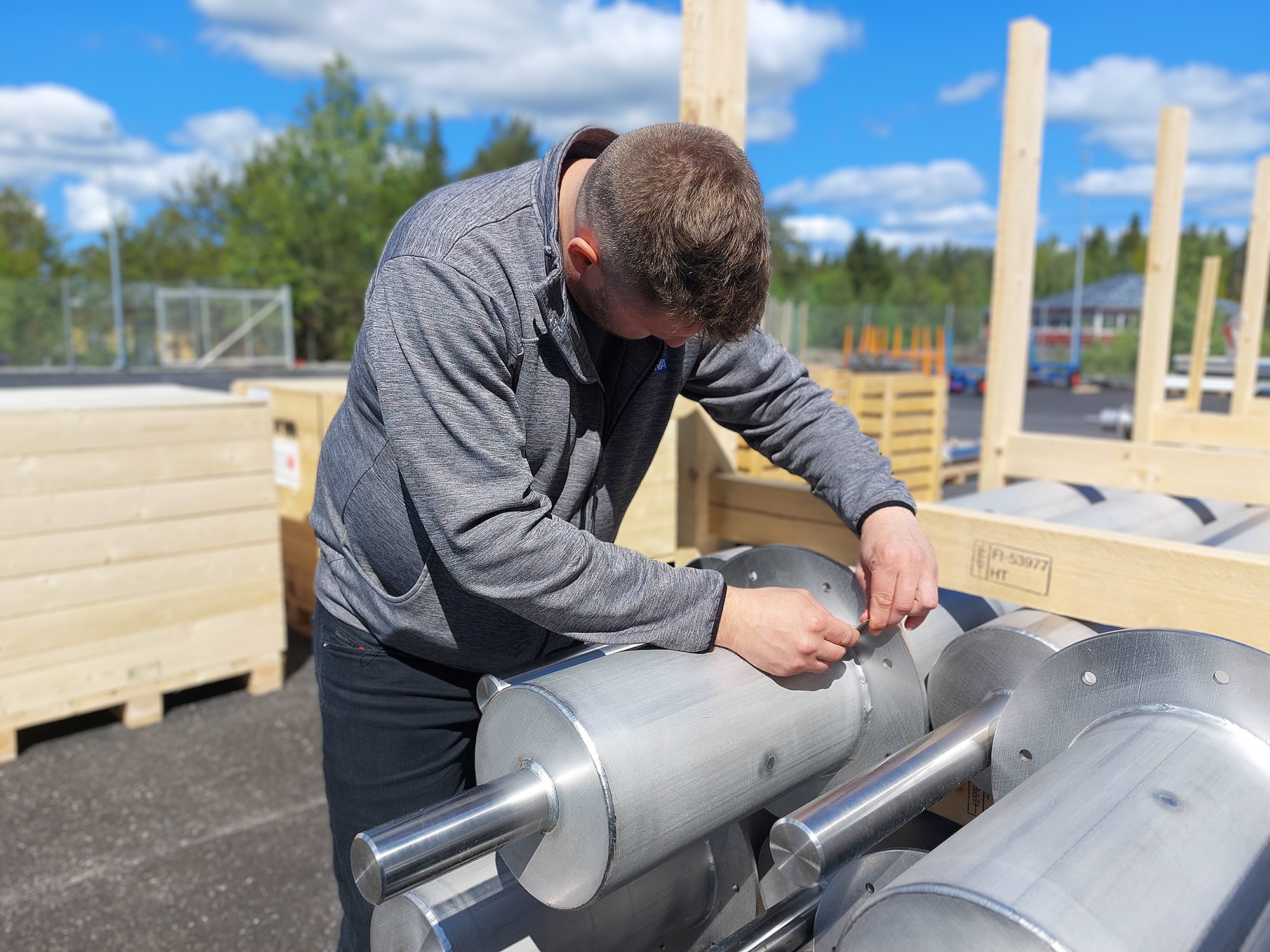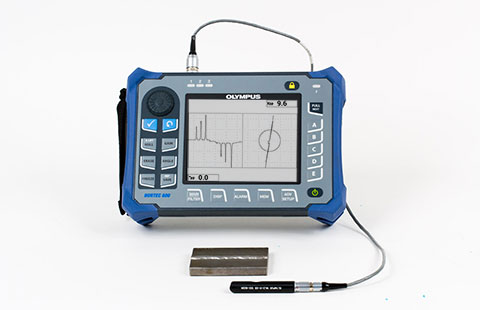Welding Inspection Racine: Making Sure Accuracy and Integrity in Every Weld
Welding Inspection Racine: Making Sure Accuracy and Integrity in Every Weld
Blog Article
Innovative Approaches to Fillet Weld Evaluation and Testing: Enhancing Weld High Quality and Compliance Standards
In the world of welding, the high quality and stability of fillet welds play a vital function in guaranteeing the architectural strength and reliability of numerous commercial components. With the consistent drive for enhanced performance and conformity with strict standards, the expedition of innovative strategies to fillet weld assessment and testing has actually become imperative.
Advanced Non-Destructive Screening Methods
Making use of advanced technologies, advanced non-destructive screening methods play a critical function in making certain the stability and top quality of fillet welds. These techniques, such as phased array ultrasonic testing (PAUT) and magnetic fragment testing (MPT), offer thorough insights right into the weld's inner structure without triggering any damages to the product. PAUT, for instance, uses numerous ultrasonic elements to examine the weld from numerous angles, providing a detailed visualization of possible problems like absence of fusion or cracks.
By using these innovative non-destructive screening strategies, weld assessors can precisely evaluate the high quality of fillet welds, guaranteeing compliance with sector criteria and guidelines. The capability to discover problems early on not only enhances weld top quality however likewise prevents pricey rework or failings in structural integrity, underlining the relevance of these ingenious testing strategies in welding examinations.
Robotics and Automation in Assessment
The integration of robotics and automation has actually reinvented the evaluation procedure for fillet welds, boosting effectiveness and accuracy in top quality evaluation. Robotics offer exact control and repeatability in examining welds, ensuring reliable and regular results. Automated systems can be set to comply with specific assessment paths, making sure comprehensive insurance coverage of welds and decreasing the threat of human error.
Robot assessment systems equipped with sophisticated sensing units can spot and gauge weld features with high accuracy, giving comprehensive information for analysis. These systems can identify issues such as cracks, absence of fusion, and porosity, allowing punctual corrective actions to be taken. In addition, robotics and automation enable real-time data collection and evaluation, providing instant comments to drivers and helping with quick decision-making procedures.
Furthermore, making use of robotics and automation in fillet weld assessment improves general efficiency by lowering inspection times and enhancing assessment throughput. By enhancing the examination process, manufacturers can guarantee weld quality and compliance criteria are fulfilled effectively, ultimately causing set you back financial savings and improved item quality.
Utilizing Artificial Intelligence for Analysis
Expert system plays an essential function in improving the effectiveness and accuracy of analysis in fillet weld assessment procedures. By using the power of AI, assessors can simplify the evaluation of weld high quality and compliance standards, resulting in more reputable and accurate results. AI formulas can swiftly refine huge amounts of data from weld examinations, identifying issues or inconsistencies that might be testing to determine with the naked eye. This innovative innovation enables real-time surveillance of weld top quality, enabling immediate rehabilitative activities to be taken if any issues are identified.
Moreover, AI systems can pick up from previous evaluation information, consistently boosting their ability to determine possible website here defects and variances in fillet welds. This flexible learning ability improves the total quality control process, lowering the likelihood of human error and making sure that welds fulfill the required standards. By integrating man-made knowledge right into learn this here now fillet weld evaluation, industries can achieve greater levels of effectiveness, consistency, and compliance in their assessment methods.
Portable Devices for On-Site Inspection
 Enhancing area examination effectiveness, the adoption of mobile devices revolutionizes on-site assessment processes for fillet welds. These tools use adaptability and ease, permitting inspectors to conduct extensive exams in numerous areas, consisting of challenging or remote environments. Portable tools such as ultrasonic testing devices, magnetic particle evaluation devices, and digital radiography systems offer real-time data and high-resolution imaging abilities, allowing quick decision-making and immediate feedback on weld quality.
Enhancing area examination effectiveness, the adoption of mobile devices revolutionizes on-site assessment processes for fillet welds. These tools use adaptability and ease, permitting inspectors to conduct extensive exams in numerous areas, consisting of challenging or remote environments. Portable tools such as ultrasonic testing devices, magnetic particle evaluation devices, and digital radiography systems offer real-time data and high-resolution imaging abilities, allowing quick decision-making and immediate feedback on weld quality.One significant benefit of portable devices is their capacity to simplify examination treatments, minimizing downtime and improving general productivity. Inspectors can easily move these devices to various work sites, getting rid of the requirement for moving hefty equipment or parts to off-site facilities. In addition, the mobility of these tools advertises cost-effectiveness by lessening transport costs and accelerating inspection timelines.
Moreover, making use of portable tools for on-site examination promotes proactive quality assurance procedures, as inspectors can without delay identify and address any type of potential welding issues or inconsistencies. By incorporating these cutting-edge innovations right into on-site assessment practices, welding specialists can guarantee conformity with market standards and improve weld quality, eventually leading to enhanced structural stability and safety and security in different welding applications.
Assimilation of Data Monitoring Systems
Having actually maximized on-site evaluation procedures through the usage of mobile tools, the next stage entails the seamless combination of information management systems to further improve performance and information analysis abilities in fillet weld examination and testing. Welding Inspection Racine. By integrating information monitoring systems right into the inspection process, companies can enhance data collection, storage, and analysis. This combination permits for real-time monitoring of weld quality, instant identification of flaws, and punctual decision-making to rectify any problems that might arise during the evaluation procedure
The assimilation of data monitoring systems allows smooth communication in between different stakeholders included in the examination process, fostering partnership and enhancing general quality control procedures. Ultimately, the combination of information administration systems offers to elevate the requirements of fillet weld assessment and testing, making sure conformity with market laws and boosting weld top quality.
Verdict
In check my source verdict, cutting-edge techniques to fillet weld inspection and screening have actually substantially enhanced weld quality and conformity criteria. Advanced non-destructive testing techniques, robotics, automation, fabricated knowledge, portable tools, and information monitoring systems have changed the way weld assessments are performed. By making use of these technologies, markets can make sure that welds fulfill the called for quality standards and policies, eventually boosting overall effectiveness and security in welding procedures.

By using these innovative non-destructive screening strategies, weld assessors can properly analyze the top quality of fillet welds, making certain conformity with sector standards and regulations. Portable devices such as ultrasonic screening tools, magnetic bit assessment devices, and digital radiography systems offer real-time data and high-resolution imaging capabilities, making it possible for fast decision-making and instant responses on weld high quality.
Having actually enhanced on-site evaluation processes via the application of portable tools, the following phase includes the seamless integration of information administration systems to additionally enhance efficiency and information analysis capabilities in fillet weld examination and screening (Welding Inspection Racine). Ultimately, the integration of information administration systems offers to boost the standards of fillet weld evaluation and screening, making certain compliance with industry guidelines and improving weld top quality
 In conclusion, innovative strategies to fillet weld assessment and testing have significantly boosted weld high quality and compliance criteria.
In conclusion, innovative strategies to fillet weld assessment and testing have significantly boosted weld high quality and compliance criteria.Report this page